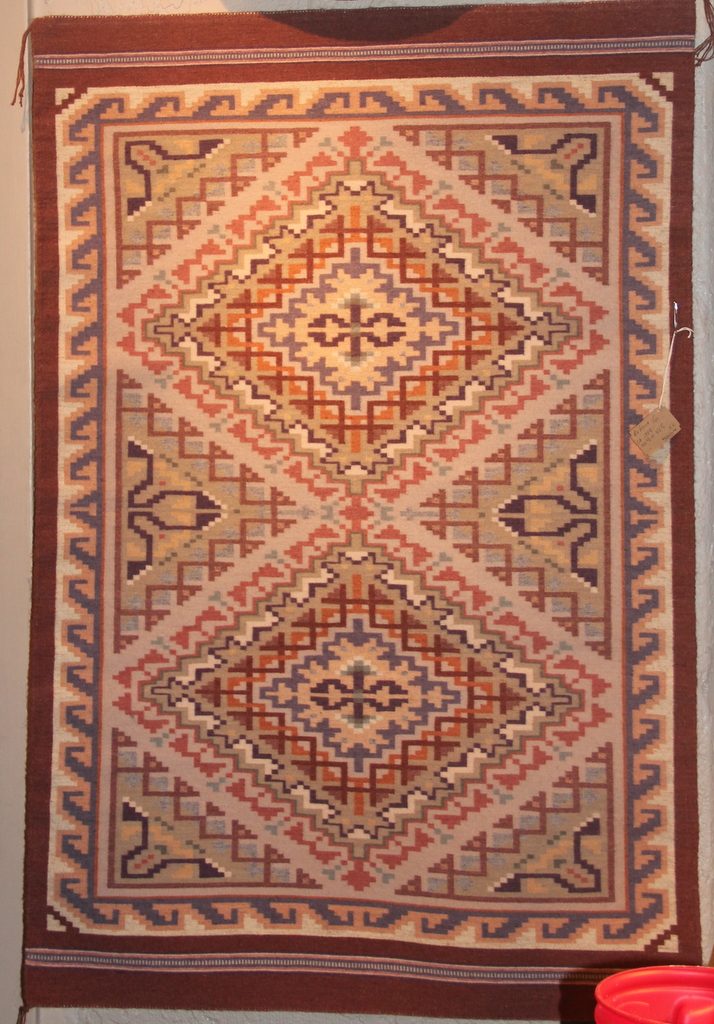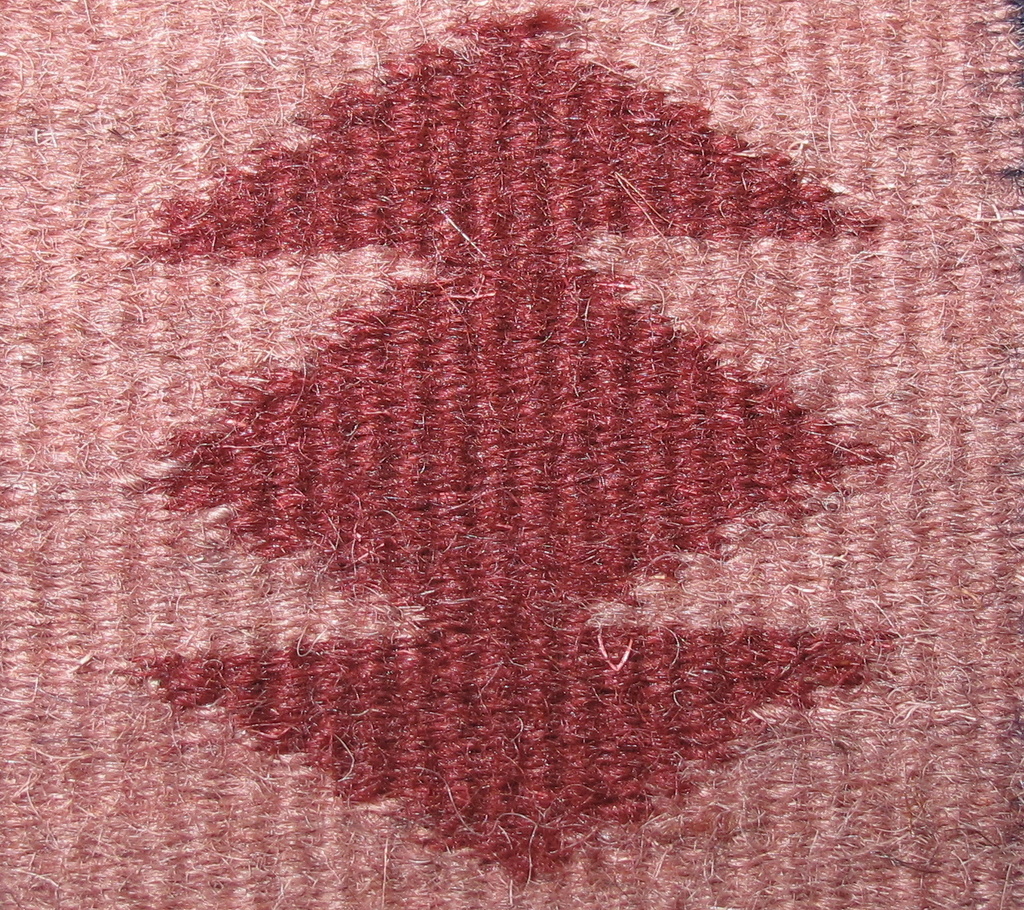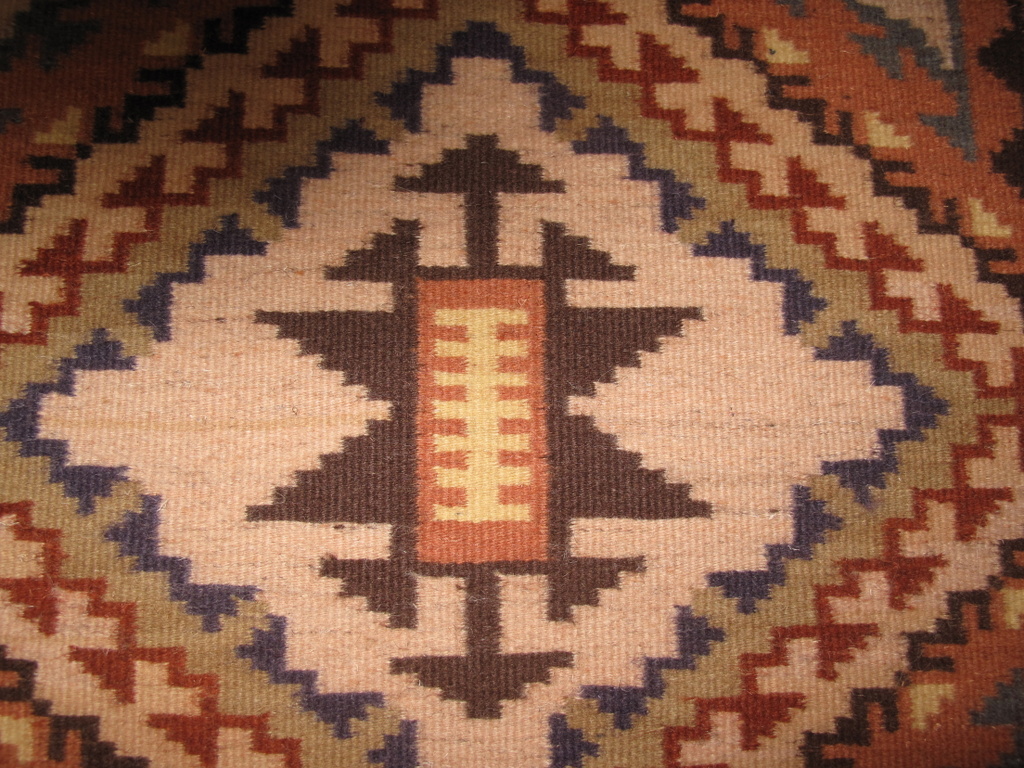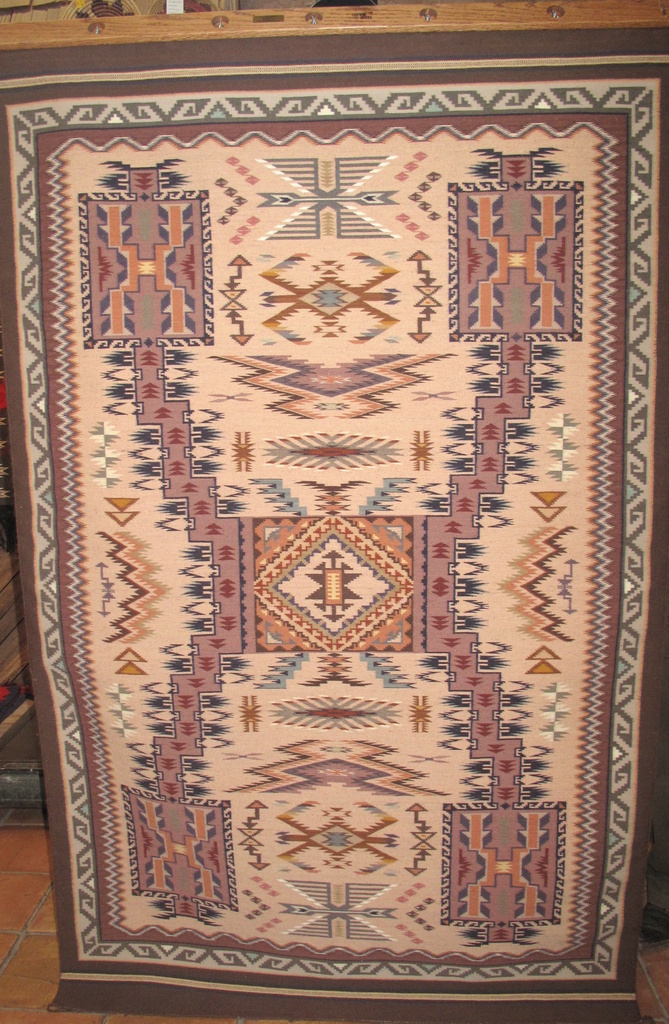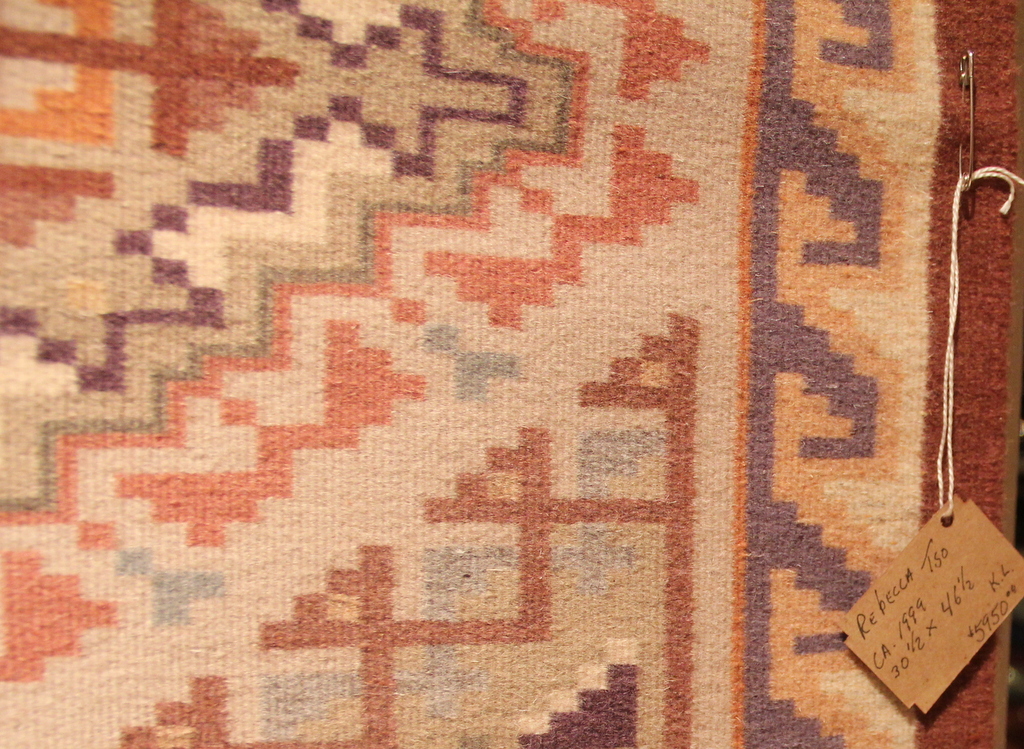Running into a Friend: The Burntwater Masterpieces of Rebecca Tso
Rebecca Tso’s elegant Burntwater was woven around 1999. It’s at the Old Territorial Shop in Scottsdale, AZ
Tempe , AZ The Heard Museum Indian Market is coming up this weekend and there are already events going on in the Phoenix area in anticipation. The Old Town Scottsdale Arts Walk, for instance, had a Native American theme last night and Main St. was a fun place to be. When I got home, my husband asked me if I’d seen anyone I knew. I said I hadn’t. This morning I realized that in a way, I had. At the Old Territorial Shop, I was taken by a very, very finely woven Burntwater that’s pictured above. “I’ve seen that weaver’s work before”, I thought. It’s woven from Burnham’s Trading Post yarn in size 3, a lace weight yarn that is just a little beyond weaving with a strand of sewing thread. The pattern is painstakingly perfect and the colors are derived from a rainbow stretched between a southwestern sunrise and sunset. I glanced at the tag hanging from the weaving. Rebecca Tso is the weaver. Aha! I’ve never met Rebecca, but I have met another one of her creations, a younger sibling of the beautiful piece in Scottsdale. That younger weaving is the center of a bittersweet story about what a gamble it is for weavers to market their work.
In 2010, Rebecca took top honors at the Inter-tribal Ceremonial in Gallup with a Storm Pattern masterpiece that was about three times the size of the one in Scottsdale, probably about 5’x8′. The first time I saw it was at R.B. Burnham and Co. in Sanders, AZ . Trader Bruce Burnham told me that it was the finest rug he’d ever had in his trading post and that’s saying a lot. You almost never see anything this size today, let alone something this size and that fine. The picture at the left may give you some idea of what I’m talking about. It’s a very small detail from the center of the rug, maybe a couple of inches high. There are well over 80 wefts to the inch. How long did it take to weave it? A year at least, probably longer. According to Bruce, Rebecca had a hard time marketing the rug after she finished it and pawned it at his store. It “went dead”, a phrase that’s used when a customer stops paying the interest on the pawned item. The way that Indian traders use pawn, as long as you pay the interest, the item stays with the trader. It’s a little like a safety deposit box in a bank. Once it went dead, Bruce could have legally taken possession of the rug, but Rebecca knew him pretty well and didn’t think he’d do that and he didn’t.
Bruce hatched a plan to put the rug into the Ceremonial, which includes a highly competitive juried show for Native American artists. If it did well at the Ceremonial, Bruce would take it on to Indian Market in Santa Fe. It was way past the date to enter it into the juried competition there, but Bruce’s wife Virginia organizes a private show that runs near the Plaza, one of many shows that are concurrent with the Indian Market. Bruce put a price tag of $30,0000 on the rug after making a consignment deal with Rebecca; he couldn’t afford to buy the rug outright at a price that he and Rebecca thought was fair.
Rebecca’s Storm Pattern won Best in Show at the Ceremonial and that netted her several thousand dollars in prize money. Bruce had a couple of potential buyers at the $30,000 price, but having won a prestigious prize, Rebecca thought that she might be able to get more at Indian Market and increased the asking price to $45,000. The rug didn’t sell, the previous potential buyers were alienated and Bruce returned it to Rebecca. I saw it later at a trading post in Gallup. Someone told me that Rebecca had pawned it to another trader, who took possession of it after she stopped paying the interest. I hope that the prize money and the pawn loan netted her at good portion of what she would have gotten if the lower price negotiations had gone through, but I don’t have any way of knowing whether it did.
Weavers, traders, dealers and collectors historically have developed long term relationships built on the idea that a fair price will be paid for a high quality product. It’s a far from perfect system and predicated ideals of high ethics and honesty that aren’t always adhered to. Imperfect as it is, that system has helped weavers provide for their families for a long time; for Rebecca Tso’s Storm Pattern in 2010, it didn’t work. You could say that she shouldn’t have woven something that large without having it commissioned or pre-sold. You could say that she should have tried to market it herself and not gone through traders. You could say that she shouldn’t have raised the price. You could say that she shouldn’t have pawned it again. That’s the part of the story that I wish were different; that’s the part of the story that’s bitter.
For all time and against all the odds, Rebecca Tso produces masterpieces that have a shining and beautiful spirit that will go on as long as there is anyone to remember them. They seem to come from a place that is driven by a need to create beauty and doesn’t consider how it may be valued, perceived or what other benefits may come from it. I hope that Rebecca can be and is proud of her weaving skill and that it will bring her many rewards in many ways. That’s the sweet part of the story, or I hope it is. It is up to us who know the story to help make it less bitter and more and more sweet.
There’s a picture of Rebecca Tso’s Best in Show Storm Pattern below.
Hagoshii (so long for now)
Mary Walker
